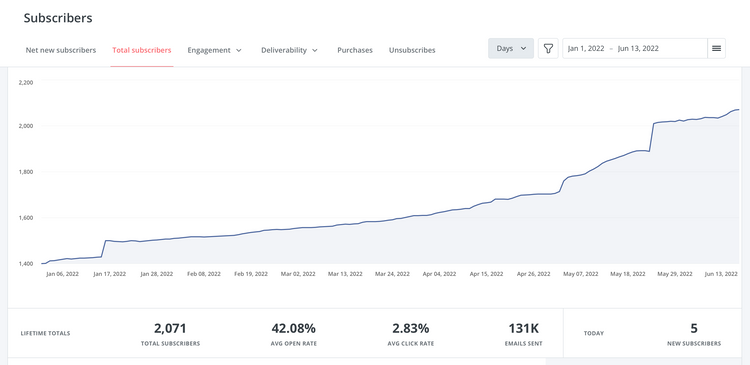Finding And Creating Leverage In Your Business
Pulling lessons from Naval Ravikant and Nathan Barry on creating leverage, and using it to get results in your business.

This post is part of the 60 Day Project – one post a day to help you prepare your business for success in 2021. Subscribe using the button below to get new posts sent straight to your email.
I’ve thought a lot about the idea of leverage since reading Naval Ravikant’s famous Twitter thread on weath:
In it he mentions the topic of leverage a few times. I’ll share those tweets here, then get into how we can use this principle in our creative businesses:
Lets dive in!
How To Use Leverage In Your Creative Business
The idea with leverage is to use your time, your assets, your mind, whatever is at your disposal to get to a desired result faster.
You’ve likely heard of Archimedes’ comment on leverage –
“Give me a lever long enough and a fulcrum on which to place it, and I shall move the world. ”
He knew, and could prove using math, that this principle is true.
Naval gives us an updated and specific call to action – arm yourself with…leverage.
It’s one of three things he says we need in this context in the pursuit of riches, or wealth.
For us creative types, we can look at a creative freelancer for a perfect example of how to apply this principle.
Creating Leverage – From Freelancer To CEO
Nathan Barry is someone I’ve been following for a long time, nearly a decade now. He started off as a freelance designer, trading his time for dollars. In this scenario, there isn’t much leverage. In order for money to be made, Nathan had to be working.
A few years into his career, he created some digital products that he could sell – iPhone apps and ebooks.
All of a sudden, he created a little bit of leverage. These products could be sold without him being present. He could code an app, or write a book, once, and sell it many times over.
Nathan made hundreds of thousands of dollars off of his products without needing to increase the amount of time he was working. He created leverage. Now, instead of 40 hours of work for a $3,000 project, he could spend a week writing a book that could make $250,000 in sales.
From there, Nathan created a company called ConvertKit – an email service provider for creators. The initial version he built was $50/month to use. I know because I was probably one of the first hundred or so users back in 2013.
Since that time, he now serves over 30,000 creators, has a company with dozens of employees, and revenues in the millions of dollars per year. ConvertKit’s business is open for anyone to view, and you can see the kind of leverage he has created through code, people, and media.
Creating an app and a company to leverage turned his time into millions and millions of dollars.
From $3,000, to a few hundred thousand, to millions of dollars. That’s what leverage looks like in a creative business. Nathan took the same principle Naval talks about and used all three forms of leverage – capital, people, and products – to create an incredible life for him and his employees.
“Code And Media Are Permissionless”
This part of the thread is where I want to leave off today. Creating this kind of leverage doesn’t require permission from anyone.
You can create assets like photographs, music, books, apps, courses, and more and no one can stop you. There are no gate keepers, no authorities, no one in your way.
The difference between being a starving artist and creating a six- or even seven-figure business for yourself starts by understanding leverage.
What does that look like on a daily basis?
You need to devote enough time each day to creating assets that can work for you while you work on other things. Products, for example, are a great place to start.
You could spend your time – like I’ve been known to do – writing another blog post. But you can also spend an extra few minutes ensuring that the post is set up properly for SEO, so that the content can be a source of leverage for you in the long term.
You can trade the time scrolling a social feed to build an audience there instead, something that you can leverage later on.
Take some time to think about the goals you are trying to achieve for you and your business, then think in terms of leverage in order to get there quicker and more directly.
If you want help with what that looks like for your business, you can always reach out.




Member discussion